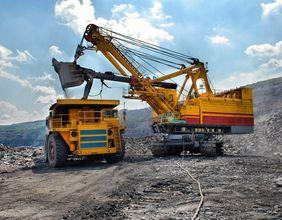Highlights
- Since Bitcoin’s November high of US$68,500, the coin has dropped to its current price of around US$37,000
- One of the main issues that all currencies face – whether they be fiat or crypto – is inflation, which is a decrease in value
- When someone - usually a developer - decides to book burn a coin, this essentially reduces the supply of that coin
Cryptocurrency is still a relatively new asset class which has exploded over the past two years, in particular. Take the industries foremost token, Bitcoin. In 2020, this coin was valued at US$10,000. Fast forward to November of 2021 and Bitcoin hit a new record price of US$68,500.
While this is impressive, it doesn’t take into account the wild fluctuations in price, not just with Bitcoin but with the wider crypto market. Going with Bitcoin as an example, since the aforementioned November high, the coin has dropped to its current price of around US$37,000 – a drop of around 45% within the space of three months.
It’s clear then that cryptocurrency has an issue of stability. There are a couple of ways to bring back stability, and this is done with varying degrees of effectiveness.
Number One: The Coin Burn
Coin burning is a process by which a number of coins are taken off the blockchain. This is usually done by the blockchain’s developers, who take a sum of coins and put them into a wallet and then throw away the key (a series of numbers akin to a password). This, thereby, renders the wallet address and all its contents useless by essentially making the address unusable.
What does this achieve?
When someone - usually a developer - decides to book burn a coin, this essentially reduces the supply of that coin. The result is that that particular token becomes more scarce, which in theory should increase demand.
However, coin burning doesn’t guarantee that the price of a crypto will rises. In fact, some experts argue that coin burning doesn’t make a difference to the coin’s price at all.
Furthermore, coin burning contains a potentially sinister and deceptive component where developers say that they’ve burnt coins in an effort to increase scarcity when instead those developers have merely put large quantities of coins into a crypto wallet without throwing away the key. In other words, they have access to large amounts of crypto put into a wallet that investors believe are unusable.

Image source: © Andreypopov | Megapixl.com
Number Two: The Buy Back
An alternative to coin burning to increase the price of a crypto is a buyback.
This process involves reducing the supply of coins through a corporation which buys back a large number of coins it had just sold, thereby theoretically increasing the overall value.
So, What Do These Two Tactics Achieve?
One of the main issues that all currencies face – whether they be fiat or crypto – is inflation, which is a decrease in value.
Cryptocurrency is currently at a crossroads as it is being marketed as a hedge against the inflation of the US dollar, which last October reached levels not seen in 30 years.
Bitcoin Bulls tend to put forth the opinion that Bitcoin is the perfect place for people to invest money, due to its rate of growth outweighing the high rates of inflation which are likely to continue as governments around the world recover from a heavily restricted economy caused by mandated lockdowns.
But this will only work if crypto’s own inflation, manipulated mainly by The Coin Burn and The Buy Back, is controlled as we head into 2022 and beyond.





